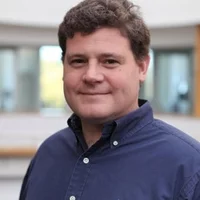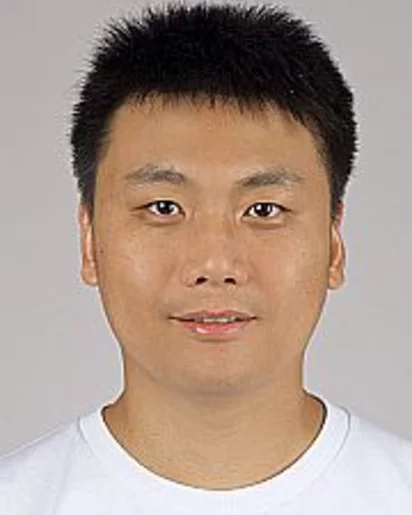Biography
Biaolong Liu is experienced in the development of laser sources in the spectral range ranging from the UV to THz frequencies. In particular, his recent achievements in the generation of widely tunable, intense THz pulses adds more possibilities in the coherent phase control of complex materials.
He received his bachelor degree from University of Science and Technology of China (USTC) in 2011 with the major in condensed matter physics. Then he joined the National Key Lab for Laser and Crystal at Chinese Academy of Sciences as a master student. He was awarded as a ‘highly-qualified young researcher’ and leading a project dedicated to the development of novel high-power 1.1-μm and UV laser sources based on high-harmonic generation in novel nonlinear optical crystals. He gained experience in designing high-power laser oscillator and amplifier system and nonlinear frequency convertors.
Within Biaolong Liu’s Ph.D in Prof. Andrea Cavalleri’s group at the Max Planck Institute for the Structure and Dynamics in Hamburg, he started to focus on the ultrafast dynamics of complex materials using THz light waves. His core project was the development a new table-top approach for the generation of narrowband pulses tunable accrossing the THz-gap range. This source is based on chirped-pulse difference frequency generation in nonlinear organic crystals, which produces frequency-tunable pulses with MV/cm field strength in the mid-infrared to far-infrared range. Then he implemented the strong narrowband terahertz radiation to the time-resolved THz spectroscopy to investigate the optical fingerprints of transient light-induced superconductivity in high-TC cuprates.
In 2020, Biaolong Liu joined the pump laser group in the LNO lab of Photon Science Division in PSI. Currently, he is dedicated to make a wide range of pump wavelengths available for experiments with ultrashort x-ray pulses at SwissFEL, especially for the experiments at the ATHOS beamlines.
Institutional Responsibilities
Biaolong Liu, together with the other team members of the pump laser group is responsible to preparing the tailored laser pulses for the optical pump x-ray probe experiments for commissioning and user operations. To this end, he takes the responsibility of the operation and maintenance of a commercial Ti:sapphire laser system, building optical devices for pulse compression, frequency conversion and integrating the optical system to the x-ray facility and diagnostic tools. He will also contribute to the development of the beamlines and user support at SwissFEL, and carry on independent researches on the study of non-equilibrium phenomena in complex solids.
Scientific Research
Biaolong Liu’s research is focused on nonlinear Mid-IR to THz light-wave generation and non-equilibrium spectroscopy on complex oxides, especially in high-Tc cuprates. He is aiming at adding new experimental possibilities for the users at SwissFEL with tailored, narrowband THz pulses across the so-called “THz-gap”.
Selected Publications
Pump frequency resonances for light-induced incipient superconductivity in YBa2Cu3O6.5, B. Liu, M. Foerst, D. Nicolleti, M. Fechner, J. Porras, B. Keimer, and A. Cavalleri, Physical Review X, 10, 011053 (2020).
Optical excitation in the cuprates has been shown to induce transient superconducting correlations above the thermodynamic transition temperature TC, as evidenced by the terahertz-frequency optical properties in the nonequilibrium state. In YBa2Cu3O6+x, this phenomenon has so far been associated with the nonlinear excitation of certain lattice modes and the creation of new crystal structures. In other compounds, like La2−xBaxCuO4, similar effects were reported also for excitation at near-infrared frequencies, and were interpreted as a signature of the melting of competing orders. However, to date, it has not been possible to systematically tune the pump frequency widely in any one compound, to comprehensively compare the frequency-dependent photosusceptibility for this phenomenon. Here, we make use of a newly developed nonlinear optical device, which generates widely tunable high-intensity femtosecond pulses, to excite YBa2Cu3O6.5 throughout the entire optical spectrum (3–750 THz). In the far-infrared region (3–24 THz), signatures of nonequilibrium superconductivity are induced only for excitation of the 16.4- and 19.2-THz vibrational modes that drive c-axis apical oxygen atomic positions. For higher driving frequencies (25–750 THz), a second resonance is observed around the charge transfer band edge at approximately 350 THz. These findings highlight the importance of coupling to the electronic structure of the CuO2 planes, mediated either by a phonon or by charge transfer.
Polarizing an antiferromagnet by optical engineering of the crystal field, A. Disa, M. Fechner, T. Nova, B. Liu, M. Foerst, D. Prabhakara, P.G. Radaelli and A. Cavalleri. Nature Physics, 16, 937-941 (2020)
Strain engineering is widely used to manipulate the electronic and magnetic properties of complex materials. For example, the piezomagnetic effect provides an attractive route to control magnetism with strain. In this effect, the staggered spin structure of an antiferromagnet is decompensated by breaking the crystal field symmetry, which induces a ferrimagnetic polarization. Piezomagnetism is especially appealing because, unlike magnetostriction, it couples strain and magnetization at linear order, and allows for bi-directional control suitable for memory and spintronics applications. However, its use in functional devices has so far been hindered by the slow speed and large uniaxial strains required. Here we show that the essential features of piezomagnetism can be reproduced with optical phonons alone, which can be driven by light to large amplitudes without changing the volume and hence beyond the elastic limits of the material. We exploit nonlinear, three-phonon mixing to induce the desired crystal field distortions in the antiferromagnet CoF2. Through this effect, we generate a ferrimagnetic moment of 0.2 μB per unit cell, nearly three orders of magnitude larger than achieved with mechanical strain.
Generation of narrowband, high-intensity, carrier-envelope phase-stable pulses tunable between 4 and 18 THz, B. Liu, H. Bromberger, A. Cartella, T. Gebert, M. Foerst and A. Cavalleri. Optics Letters, 42, 1, 129-131 (2017), Editor’s pick.
We report on the generation of high-energy (1.9 μJ) far-infrared pulses tunable between 4 and 18 THz frequency. Emphasis is placed on tunability and on minimizing the bandwidth of these pulses to less than 1 THz, as achieved by difference-frequency mixing of two linearly chirped near-infrared pulses in the organic nonlinear crystal DSTMS. As the two near-infrared pulses are derived from amplification of the same white light continuum, their carrier envelope phase fluctuations are mutually correlated, and hence the difference-frequency THz field exhibits absolute phase stability. This source opens up new possibilities for the control of condensed matter and chemical systems by selective excitation of low-energy modes in a frequency range that has, to date, been difficult to access.


